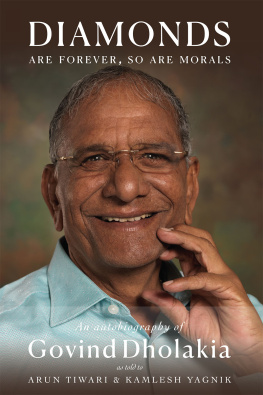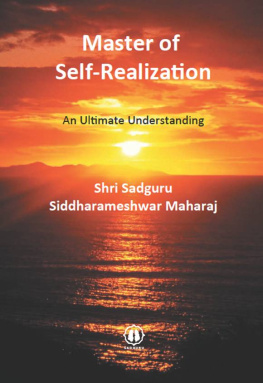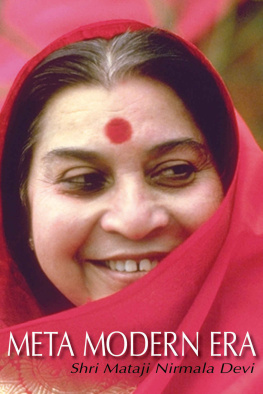Govind Raghunath Dabholkar (Hemadpant) - Shri Sai Satcharita
Here you can read online Govind Raghunath Dabholkar (Hemadpant) - Shri Sai Satcharita full text of the book (entire story) in english for free. Download pdf and epub, get meaning, cover and reviews about this ebook. year: 2005, genre: Religion. Description of the work, (preface) as well as reviews are available. Best literature library LitArk.com created for fans of good reading and offers a wide selection of genres:
Romance novel
Science fiction
Adventure
Detective
Science
History
Home and family
Prose
Art
Politics
Computer
Non-fiction
Religion
Business
Children
Humor
Choose a favorite category and find really read worthwhile books. Enjoy immersion in the world of imagination, feel the emotions of the characters or learn something new for yourself, make an fascinating discovery.
- Book:Shri Sai Satcharita
- Author:
- Genre:
- Year:2005
- Rating:5 / 5
- Favourites:Add to favourites
- Your mark:
- 100
- 1
- 2
- 3
- 4
- 5
Shri Sai Satcharita: summary, description and annotation
We offer to read an annotation, description, summary or preface (depends on what the author of the book "Shri Sai Satcharita" wrote himself). If you haven't found the necessary information about the book — write in the comments, we will try to find it.
Shri Sai Satcharita — read online for free the complete book (whole text) full work
Below is the text of the book, divided by pages. System saving the place of the last page read, allows you to conveniently read the book "Shri Sai Satcharita" online for free, without having to search again every time where you left off. Put a bookmark, and you can go to the page where you finished reading at any time.
Font size:
Interval:
Bookmark:
Govind Raghunath Dabholkar alias Hemadpant
Shri Sai Sat Charitra
By
Govind Raghunath Dabholkar alias Hemadpant
Chapter I
Salutations -- The Story of Grinding Wheat and Its Philosophical Significance.
According to the ancient and revered custom, Hemadpant begins the work, Sai Satcharitra, with various salutations.
First, he makes obeisance to the God Ganesha to remove all obstacles and make the work a success and says that Shri Sai is the God Ganesha.
Then, to the Goddess Saraswati to inspire him to write out the work and says that Shri Sai is one with this Goddess and that He is Himself singing His own life.
Then, to the Gods; Brahma, Vishnu and Shankar - the Creating, Preserving and Destroying Deities respectively; and says that Sainath is one with them and He as the great Teacher, will carry us across the River of Worldly Existence.
Then, to his tutelary Deity Narayan Adinath who manifested himself in Konkan - the land reclaimed by Parashurama, (Rama in the Hindi version) from the sea; and to the Adi (Original) Purusha of the family.
Then, to the Bharadwaja Muni, into whose gotra (clan) he was born and also to various Rishis, Yagyavalakya, Bhrigu, Parashara, Narad, Vedavyasa, Sanak, Sanandan, Sanatkumar, Shuka. Shounak, Vishwamitra, Vasistha, Valmiki, Vamadeva, Jaimini, Vaishampayan, Nava Yogindra etc, and also modern Saints such as Nivritti, Jnanadev, Sopan, Muktabai, Janardan, Ekanath, Namdev, Tukaram, Kanha, and Narahari etc.
Then, to his grandfather Sadashiv, father Raghunath, his mother, who left him in his infancy, to his paternal aunt, who brought him up, and to his loving elder brother.
Then, to the readers and prays them to give their whole and undivided attention to his work.
And lastly, to his Guru Shri Sainath - an Incarnation of Shri Dattatreya, Who is his sole Refuge and Who will make him realize that Brahman is the Reality and the world an illusion; and incidentally, to all the Beings in whom the Lord God dwells.
After describing in brief the various modes of devotion according to Parashara, Vyasa and Shandilya etc., the author goes on to relate the following story:
"It was sometime after 1910 A.D. that I went, one fine morning, to the Masjid in Shirdi for getting a darshan of Sai Baba. I was wonder-struck to see the following phenomenon.
After washing His mouth and face, Sai Baba began to make preparations for grinding wheat. He spread a sack on the floor; and thereon set a hand-mill. He took some quantity of wheat in a winnowing fan, and then drawing up the sleeves of His Kafni (robe); and
taking hold of the peg of the hand-mill, started grinding the wheat by putting a few handfuls of wheat in the upper opening of the mill and rotated it. I thought what business Baba had with the grinding of wheat, when He possessed nothing and stored nothing, and as He lived on alms! Some people who had come there thought likewise, but none had the courage to ask baba what He was doing. Immediately, this news of Baba's grinding wheat spread into the village, and at once men and women ran to the Masjid and flocked there to see Baba's act. Four bold women, from the crowd, forced their way up and pushing Baba aside, took forcibly the peg or handle into their hands, and, singing Baba's Leelas, started grinding. At first Baba was enraged, but on seeing the women's love and devotion, He was much pleased and began to smile. While they were grinding, they began to think that Baba had no house, no property, no children, none to look after, and He lived on alms, He did not require any wheat-flour for making bread or roti, what will He do with this big quantity of flour? Perhaps as Baba is very kind, He will distribute the flour amongst us. Thinking in this way while singing, they finished the grinding and after putting the hand-mill aside, they divided the flour into four portions and began to remove them one per head. Baba, Who was calm and quiet up till now, got wild and started abusing them saying, "Ladies, are you gone mad? Whose father's property are you looting away? Have I borrowed any wheat from you, so that you can safely take the flour? Now please do this. Take the flour and throw it on the village border limits." On hearing this, the women felt abashed and whispering amongst them, went away to the outskirts of the village and spread the flour as directed by Baba.
I asked the Shirdi people - "What was this that Baba did?" They replied that as the Cholera Epidemic was spreading in the village and this was Baba's remedy against the same; it was not wheat that was ground but the Cholera itself was ground to pieces and pushed out of the village. From this time onward, the Cholera Epidemic subsided and the people of the village were happy. I was much pleased to know all this; but at the same time my curiosity was also aroused. I began to ask myself - What earthly connection was there between wheat flour and Cholera? What was the casual relation between the two?
And how to reconcile them? The incident seems to be inexplicable. I should write something on this and sing to my heart's content Baba's sweet Leelas. Thinking in this way about this Leela, my heart was filled with joy and I was thus inspired to write Baba's Life - The Satcharita.
And as we know, with Baba's grace and blessing this work was successfully accomplished.
Philosophical Significance of Grinding
Apart from the meaning that the people of Shirdi put on this incident of grinding wheat, there is, we think, a philosophical significance too. Sai Baba lived in Shirdi for about sixty years and during this long period; He did the business of grinding almost every day
- not, however, the wheat alone; but the sins, the mental and physical afflictions and the miseries of His innumerable devotees. The two stones of His mill consisted of Karma and
Bhakti, the former being the lower and the latter the upper one. The handle with which Baba worked the mill consisted of Jnana. It was the firm conviction of Baba that Knowledge or Self-realization is not possible, unless there is the prior act of grinding of all our impulses, desires, sins; and of the three gunas, viz. Sattva, Raja and Tama; and the Ahamkara, which is so subtle and therefore so difficult to be got rid of.
This reminds us of a similar story of Kabir who seeing a woman grinding corn said to his Guru, Nipathiranjana, "I am weeping because I feel the agony of being crushed in this wheel of worldly existence like the corn in the hand-mill." Nipathiranjana replied, "Do not be afraid; hold fast to the handle of knowledge of this mill, as I do, and do not wander far away from the same but turn inward to the Center, and you are sure to be saved."
Bow to Shri Sai -- Peace be to all
Chapter II
Object of Writing the Work - Incapacity and Boldness in the Undertaking - Hot Discussion - Conferring Significant and Prophetic Title of Hemadpant - Necessity of a Guru.
In the last Chapter, the author mentioned in the original Marathi book that he would state the reason that led him to undertake the work, and the persons qualified to read the same and such other points. Now in this chapter, he starts to tell the same.
Object of Writing the Work
In the first chapter, I described Sai Babas miracle of checking and destroying the epidemic of Cholera by grinding wheat and throwing the flour, on the outskirts of the village. I heard other miracles of Sai Baba to my great delight, and this delight burst forth into this poetic work. I also thought, that the description of these grand miracles of Sai Baba would be interesting, and instructive to His devotees; and would remove their sins, and so I began to write the sacred life and teachings of Sai Baba. The life of the saint is neither logical nor dialectical. It shows us the true and great path.
Next pageFont size:
Interval:
Bookmark:
Similar books «Shri Sai Satcharita»
Look at similar books to Shri Sai Satcharita. We have selected literature similar in name and meaning in the hope of providing readers with more options to find new, interesting, not yet read works.
Discussion, reviews of the book Shri Sai Satcharita and just readers' own opinions. Leave your comments, write what you think about the work, its meaning or the main characters. Specify what exactly you liked and what you didn't like, and why you think so.









